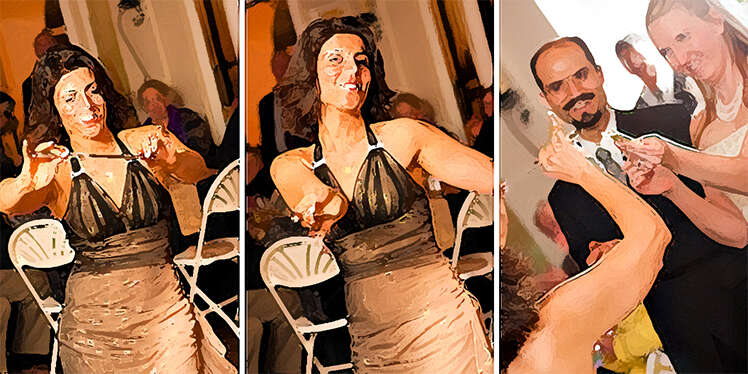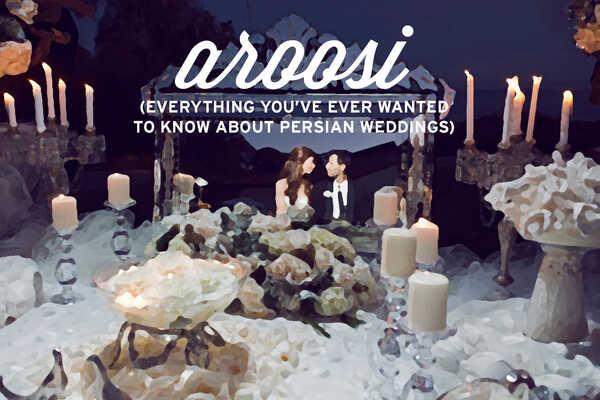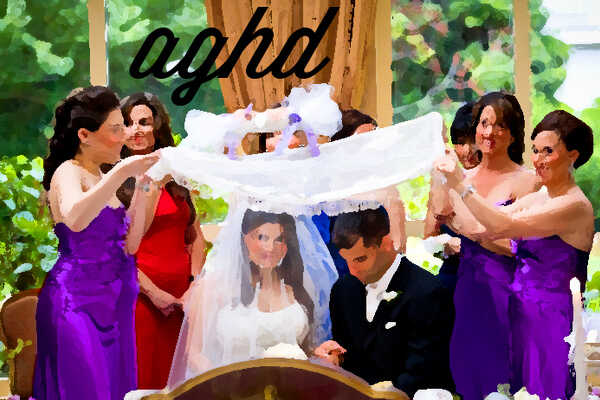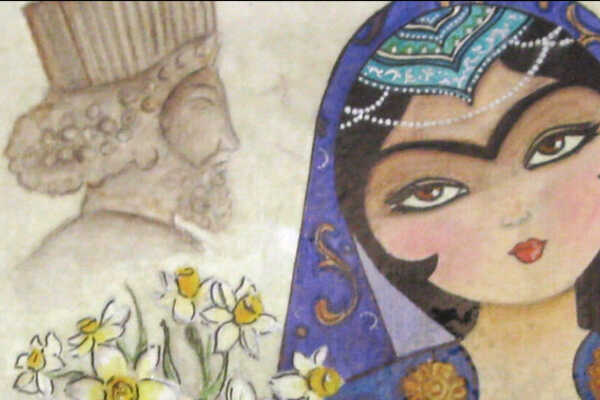
Mehmoonee- Persian Wedding Receptions
In parts 1 and 2 of our wedding series, we set the stage for Persian weddings, and talked about the aghd, the ceremony portion of the wedding. In this last part of the series, we’ll go over the final part of a Persian wedding- the mehmoonee, or reception.
The Reception
Weddings in Iranian culture are extremely important and extravagant events. In general, families save up for years for this event and no expenses are spared because it is believed that the wedding sets a precedent for the couple’s life together. It is desired that the couple get an abundant and generous start to their matrimony. Traditionally, the groom’s family would pay all the wedding expenses after the bride’s family had offered a dowry. The bride’s family would also be responsible for supplying all the household goods the bride and groom would need to start their lives together. Modern times have done away with these traditions however, and more western models of paying for the wedding expenses are utilized.
Another Persian tradition which has become quite outdated in modern culture is that of a mehriyé. In traditional times, when a couple married, they would negotiate a mehriyé, an amount of money or goods to be paid to the bride in the event of a divorce as a form of financial protection. However, in modern times women see this as a somewhat anti-feminist practice, as it implies that there is a price to a woman. Some couples still set a symbolic mehriyé such as a single flower, or they simply do away with the tradition altogether.
Wedding Guests
Persian weddings provide an excuse to gather every single person you know to a party- from friends and family to mere acquaintances. Because family is a big part of Iranian culture, family members, both close and distant, make up a large portion of the wedding guests. However, because weddings are well advertised events, it is considered rude, for instance, not to invite neighbors who might hear the news. In general, the more the merrier.
The purpose of inviting so many guests to the wedding is not only to spread joy and happiness, but also to ask for the love and support of a large number of people. Iranian culture is extremely community oriented. It is very common for children to live within several blocks of their parents throughout their lives and to have close ties even with extended family. In modern society, this is not always possible (or even desirable in many cases). However, the wedding is a good excuse to return to this idea of community support. The love and support gathered from each of these wedding guests can be used to fuel the marriage and sustain the couple in the years to come.
The Feast
Traditionally, Persian weddings don’t have seated dinners. In the past the food was served in a small plate appetizer kind of way. Now, again blending with western traditions, food is generally served buffet style. Common foods provided in a Persian wedding are an assortment of kabobs, a staple for Persian cuisine, stews such as ghorme sabzi, smoked fish, and different types of rice. A dish that must be provided at every wedding is shirin polo, a sweet rice that is, again, meant to bring sweetness into the lives of the wedding guests. In most Persian weddings, dinner is served fairly late- at about 9 or 9:30.
Greeting the Guests
Guests are treated with the highest honor in Persian culture, and weddings are no exception to this custom. During the wedding ceremony, the bride and groom take time to individually talk to each guest and thank them for attending the wedding. In addition, the couple typically set aside some time to stand in a designated spot so that guests have an opportunity to have their photos taken with them.

Raghsé Chaghoo (Knife Dance)
When it comes time to cut the cake, guests take turns 'stealing' the knife that is set for cutting the cake. They take turns dancing with the knife and collecting 'ransom money' from the couple. The knife is passed from woman to woman, each showing off her dancing skills, while the couple try to buy the knife with increasing sums of money.
When the right price has been paid (generally after a couple songs and several different dancers), the knife is finally handed over to the groom and he slices the cake. Pieces of cake are then handed out to all the guests.
Dancing and Merrimaking
Dancing is a big part of any Persian wedding, and it’s common for all guests to take to the dance floor until wee hours of the morning to help celebrate the occasion. Alcohol is also served in most modern Persian wedding unless the couple is religious, as Islam does not allow the consumption of alcohol.
The Vehicle
Usually the family of the bride and groom will take time before (or during) the wedding to secretly decorate the car of the newly married couple with ornaments and flowers. This is done so that the whole community will recognize the newlyweds as they drive through the streets. In Iran, whenever the decorated car of a newlywed drives by, everyone around it will honk in support of the newly married couple.
Gifts for Guests
In Persian weddings, it's always important to leave guests with a little parting gift. Usually, the couple will prepare little bags full of noghl, a Persian sugar coated almond treat. Noghl is a candy which is commonly used in celebratory contexts, and signifies the sharing of sweetness and good fortune.
Conclusion
The most important thing to remember about a Persian wedding is that it is the ultimate celebration of love and joy- everything else is just details to help you get there. And remember, the most important phrase to remember to tell a newly marries couple during a Persian wedding is-
mobārak bāshé!
May it be merry!
Thanks for reading and whether you are throwing a Persian wedding or simply attending one, please enjoy!


